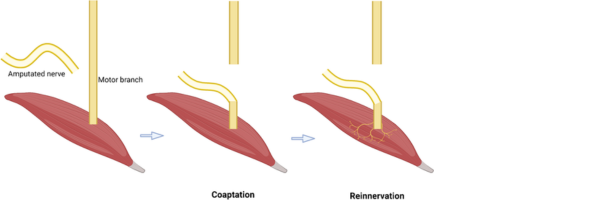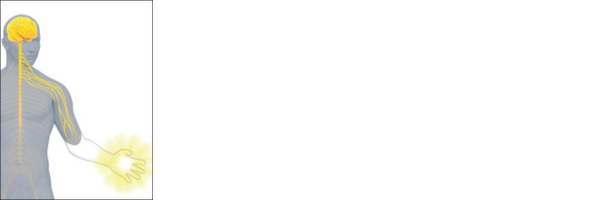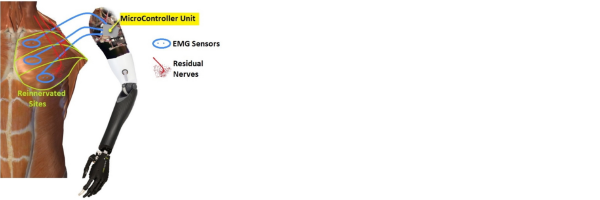
Revolutionizing Amputee Care with TMR Surgery for Superior Prosthetic Control and Pain Management
Targeted Muscle Reinnervation (TMR) is a surgical technique designed to improve the lives of amputees. By transferring severed nerves to remaining muscles, TMR facilitates more precise control of myoelectric prostheses—often referred to as "bionic" limbs—by amplifying the available muscle signals in the residual limb. This procedure not only aids in the management and prevention of neuroma pain, commonly known as "phantom" pain but also significantly enhances the functionality of prosthetic devices. For individuals with upper extremity amputations, this translates into vastly improved manipulation of prosthetic elbows, wrists, and hands.

Specialized Care for Neuroma (Phantom) Pain and Prosthetic Optimization
This advanced procedure is particularly relevant for a specific patient group experiencing neuroma pain or those seeking to optimize the use of their myoelectric prosthetics. Dr. Gaston and Dr. Loeffler, through the OrthoCarolina Reconstructive Center for Lost Limbs, have conducted extensive research and developed specialized techniques in TMR. OrthoCarolina partners with the Orthopedic Care Research Institute (OCRI)to further research and develop treatment and care for amputees.
Exploring the Synergy of VR Technology and TMR
OrthoCarolina is exploring the potential integration of Virtual Reality (VR) technology in conjunction with TMR, assessing whether it can enhance the prosthesis experience, including the management of phantom limb pain, or if its application is broader.

Phantom Limb Pain
Phantom limb pain is a phenomenon experienced by many individuals who have undergone amputation, where they continue to feel pain, discomfort, or sensations in the area of the limb that is no longer there. This pain can vary in intensity and may manifest as sharp, stabbing sensations, burning feelings, or even a persistent aching in the region where the limb once was. The exact cause of phantom limb pain is not fully understood, but it is believed to be related to changes in the brain and nervous system following amputation. This miscommunication can cause the brain to interpret signals from the nerves as pain or discomfort, even in the absence of the physical limb.

Additionally, factors such as the emotional and psychological impact of losing a limb, as well as the presence of pre-existing pain conditions, can contribute to the development of phantom limb pain. It can affect individuals differently; some may experience only mild sensations, while others may endure severe and debilitating pain. Addressing phantom limb pain is essential for enhancing the quality of life for amputees and enabling them to adapt to their new circumstances. TMR effectively addresses phantom limb pain by rerouting severed nerves to the remaining muscles in the residual limb. This process reduces miscommunication in the brain which can lead to pain sensations in the area of the lost limb. By creating new connections, TMR enhances the brain's ability to process sensory signals, diminishing the perception of pain. As patients learn to control their myoelectric prostheses using these newly connected nerves, their focus shifts from pain to functional use, promoting a more positive adaptation to limb loss.
Benefits of TMR for Amputees
Improved Control of Myoelectric Prostheses
Facilitating more precise and intuitive control of myoelectric prostheses, TMR reroutes severed nerves to remaining muscles. This allows patients to manipulate their prosthetic devices better, leading to more natural and functional movements of prosthetic elbows, wrists, and hands.

Reduction of Neuroma and Phantom Pain
Neuroma pain, also known as "phantom" pain, is a common complication following amputation. TMR effectively addresses this issue by providing the severed nerves a new target, thereby reducing or eliminating the occurrence of phantom pain. This results in a more comfortable and manageable post-amputation experience.
Enhanced Prosthetic Functionality
By increasing the available muscle signals in the residual limb, TMR enables prosthetic devices to respond more accurately to the user's intentions. This leads to smoother and more coordinated movements, enhancing the overall functionality of the prosthesis.
Support for Effective Rehabilitation
Supporting more effective rehabilitation, TMR integrates advanced surgical techniques with cutting-edge prosthetic technology. This ensures that patients achieve optimal outcomes in terms of mobility and dexterity.
Psychological and Emotional Well-being
Improved control and reduced pain contribute to a significant boost in the psychological and emotional well-being of amputees. Enhanced prosthetic functionality helps individuals regain a sense of normalcy and independence, positively impacting their overall quality of life.
Transforming Lives Through Advanced Limb Loss Surgery and Prosthetics
Dr. Glenn Gaston and Dr. Bryan Loeffler from OrthoCarolina, in collaboration with the OrthoCarolina Research Institute (OCRI), are pioneers in advancing surgical techniques and improving patient care in prosthetics and amputation rehabilitation. Their work includes groundbreaking procedures such as targeted muscle reinnervation and the innovative STARFISH procedure. The STARFISH Procedure, developed by Dr. Gaston and Dr. Loeffler, employs TMR surgery to reroute nerves from an amputated limb to intact nearby nerves.
TMR is more than a medical procedure; it's a gateway to renewed autonomy and improved quality of life for amputees. The pioneering work of OrthoCarolina and OCRI is not just advancing the field of prosthetics but also restoring hope and functionality to those who have experienced limb loss. Their commitment to innovation and patient-centered care is reshaping the future, one breakthrough at a time, ensuring that individuals can embrace life's possibilities with confidence and comfort.
Back




Leave a Comment